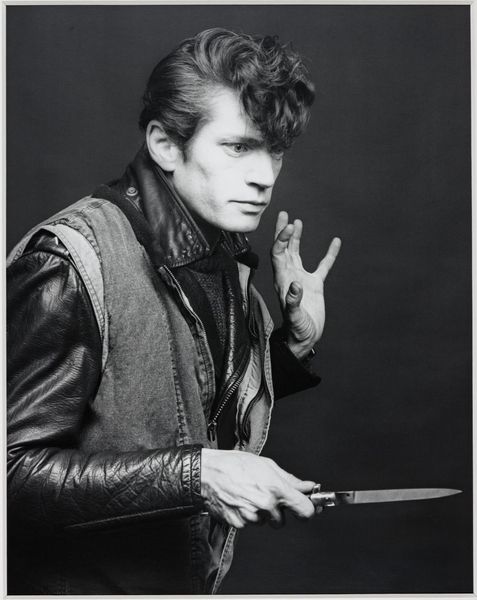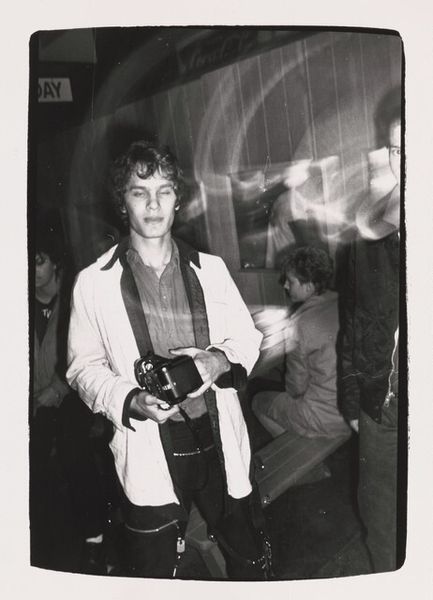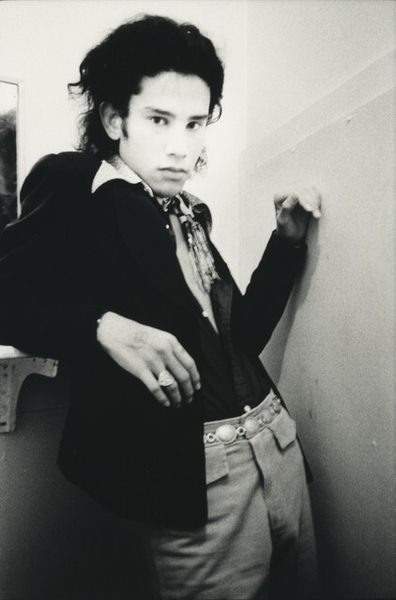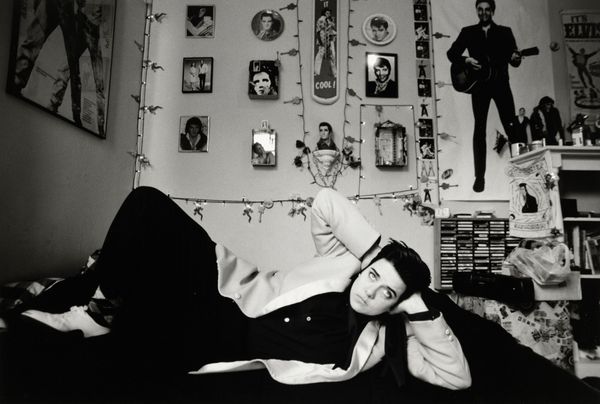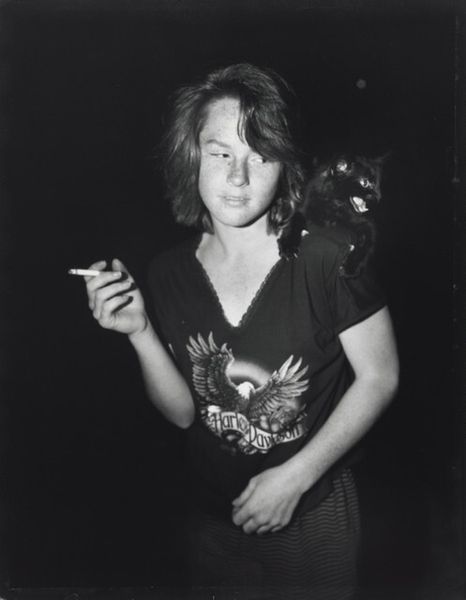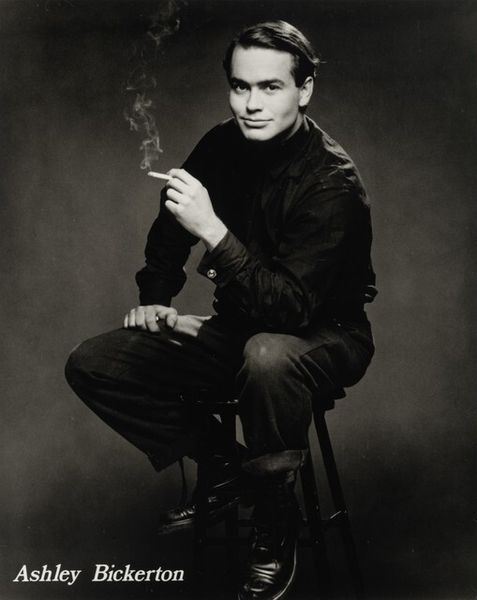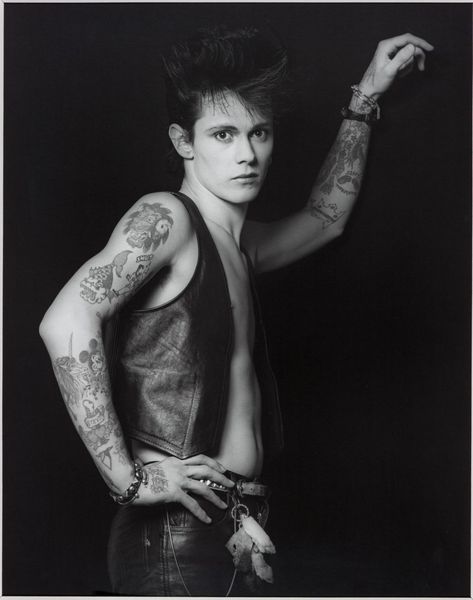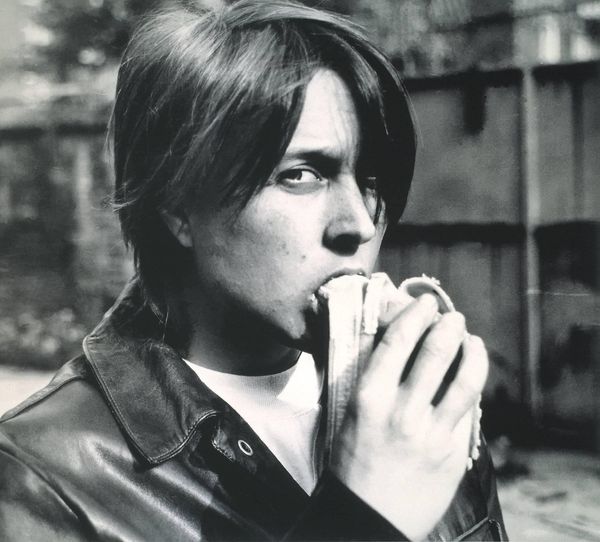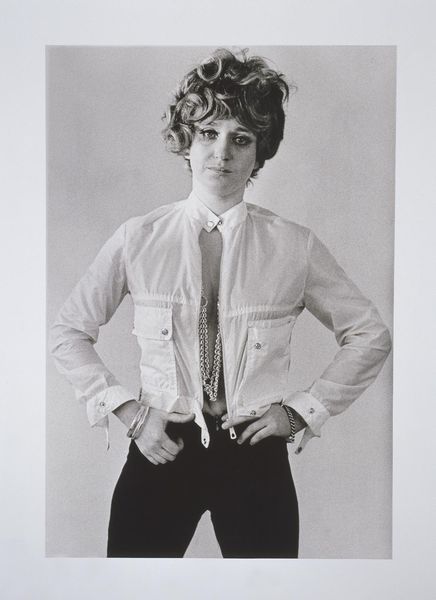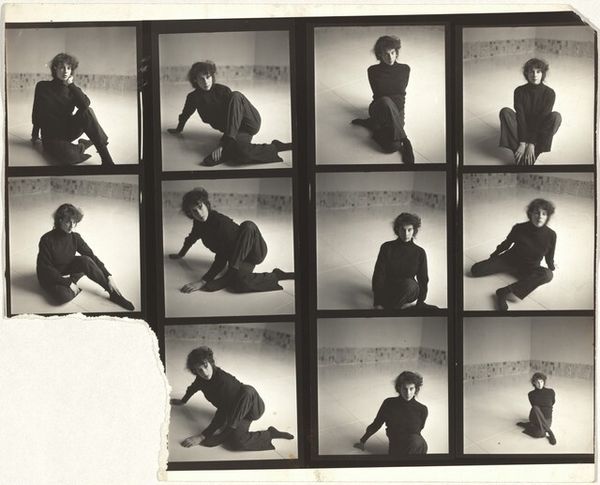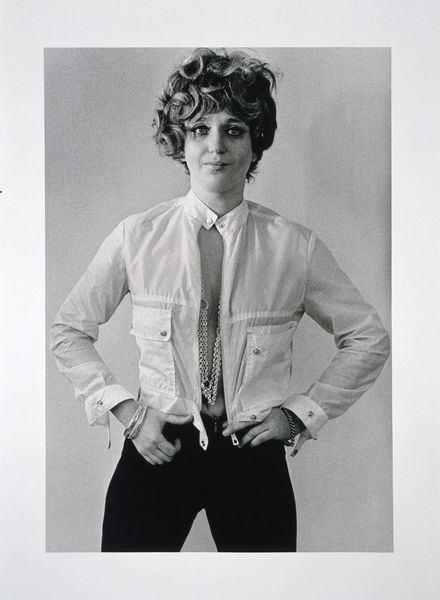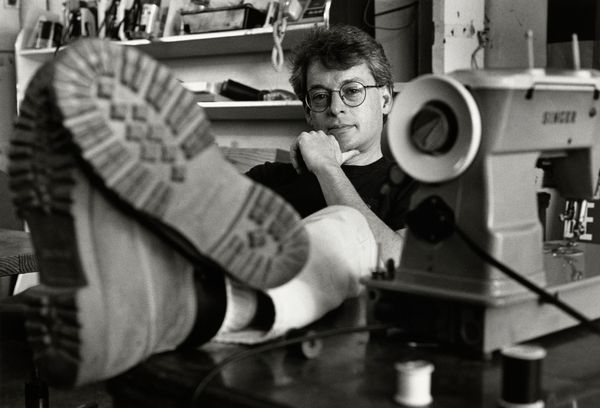
photography, gelatin-silver-print
#
portrait
#
contemporary
#
black and white photography
#
cool tone monochrome
#
photography
#
black and white
#
gelatin-silver-print
#
monochrome photography
#
monochrome
#
modernism
Dimensions: image: 80.01 × 80.01 cm (31 1/2 × 31 1/2 in.) sheet: 108.59 × 101.6 cm (42 3/4 × 40 in.)
Copyright: National Gallery of Art: CC0 1.0
Curator: Here we have Rosalind Solomon’s gelatin-silver print, “New York,” created in 1987. My initial response is somber. The grayscale palette accentuates the introspective mood of the subject. Editor: Indeed, the monochrome is striking, but consider the broader context: the materiality itself. Silver gelatin prints were common, almost a default choice then. Solomon's method invites a closer look at image-making practices during that period and how artists made material decisions. Curator: What I find interesting is the symbolic weight the image carries. The clergyman clutches what appears to be an illustrative statement related to persecution. I wonder about the artist's intention and why this man chose to associate himself with the imagery. Editor: Well, that association is key to the power dynamics. Notice his clerical collar against his bare feet and sandals— a studied visual dissonance meant to invoke both institutional power and the rejection of it. Consider the manufacturing processes that gave rise to clerical attire versus the footwear, how materials and dress codes define class, labor and identity. Curator: That tension you note seems deeply embedded. The illustrated work portrays a modern reinterpretation of the Crucifixion. It may signify the trials and tribulations this man anticipates given, perhaps, an unpopular perspective he is tasked with advocating, hence those comets or asteroids overhead. The symbols suggest not a calm resignation but a troubled acceptance. Editor: Perhaps, but also consider the broader social canvas upon which this was created in New York in 1987. What were the economic conditions enabling art production, how were photographic materials sourced and sold, who were the patrons supporting this type of work? It underscores the artist's position within that intricate web of labor, funding, and distribution channels. Curator: It’s a powerful layering. The religious iconography contrasts profoundly with the mundane details—the plush armchair, the floral arrangement, the almost blasé setting. The convergence suggests this image intends to bring faith out from the rarified cathedral spaces to highlight its intersection in day-to-day human encounters. Editor: By highlighting these tangible dimensions of its making and the prevailing market systems of that era, one may achieve a nuanced view beyond purely symbolic or aesthetic concerns, grounding ourselves within that material reality of the past. Curator: Very well, I find myself now viewing the piece as not just a snapshot of an individual, but an inquiry into social conditions—as much a creation of its context as of its subject's conscious intent. Editor: Indeed, focusing on materiality encourages us to critically investigate that complex interplay, how each facet, from chemical process to setting, informs artistic expression.
Comments
No comments
Be the first to comment and join the conversation on the ultimate creative platform.
